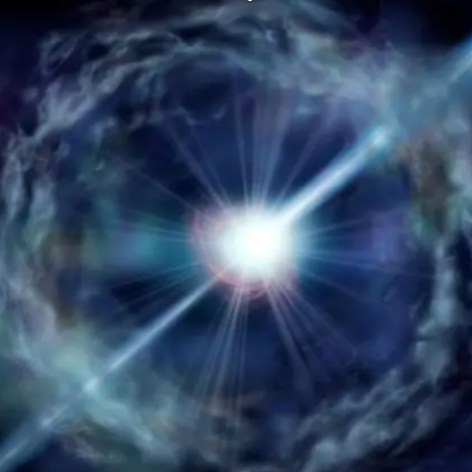


An international team of scientists led by Chinese astrophysicists released their latest discoveries about the brightest gamma ray burst in history on Wednesday, shedding new light on the most energetic explosion in the universe second only to the Big Bang.
The event, dubbed GRB 221009A, was detected on Oct 9 last year, and it came from the constellation of Sagitta at a distance of around 2.4 billion light-years from Earth. Despite the distance, the burst was so bright that it temporarily blinded several space instruments and disturbed Earth's atmosphere.
The blast immediately caught the attention of the international astrophysics community, who estimated an event this violent and bright could have only happened once a millennium, making it an extraordinarily rare opportunity to study the origins and development of gamma ray bursts.
The Institute of High Energy Physics of the Chinese Academy of Sciences, together with scientists from over 30 institutions from China, the United States, Italy, France and Germany, made accurate measurements of the prompt emission and early afterglow of this unprecedented burst using Chinese space telescopes Insight-HXMT and GECAM-C.
Prompt emission refers to the initial and most intense phase of gamma-ray burst emission, which typically lasts for several seconds and can be used to pinpoint the burst's location. The afterglow refers to the longer-lasting, less intense emission that follows the prompt emission.
Scientists discovered that within a minute, the burst had generated an isotropic energy equivalent of fully converting the mass of eight suns into energy. On a more intuitive scale, it was about the total energy released by 10,000 suns throughout their billions of years of life cycle using thermonuclear fusion. This process powers the sun but only converts a tiny fraction of its total mass into energy.
The result has smashed the previous brightness record of gamma ray bursts by a multiple of 50 times, said Xiong Shaolin, the principal investigator of GECAM-C and a researcher at IHEP who led the study, which was published on preprint server arXiv on Wednesday.
Since the discovery of gamma ray bursts in 1967, scientists have detected close to 10,000 of these events, which are either caused by the collapses of massive stars or the collision of highly dense celestial bodies, such as black holes and neutron stars, he said.
"What made GRB 221009A so special was that not only was it incredibly bright, but the burst had launched an extremely narrow and luminous jet of radiation straight at Earth, allowing us to witness its glory," Xiong said.
Zhang Shuangnan, the principal investigator of Insight-HXMT and a researcher at IHEP, said the blast took place 2.4 billion light-years away in the distant universe. If such a burst were to occur in the Milky Way galaxy, and the beams of powerful radiation pointed at Earth, it would be catastrophic, he added.
Zhang Bin, an astrophysics professor from the University of Nevada, Las Vegas, said scientists have humorously dubbed GRB 221009A as the "BOAT", an acronym for "Brightest of All Time".
"The global scientific community is fortunate to have recorded this powerful event," he said.
"The next time we witness a similar gamma ray burst, humanity may have already evolved into an interstellar civilization."
zhangzhihao@chinadaily.com.cn
If you have any problems with this article, please contact us at app@chinadaily.com.cn and we'll immediately get back to you.